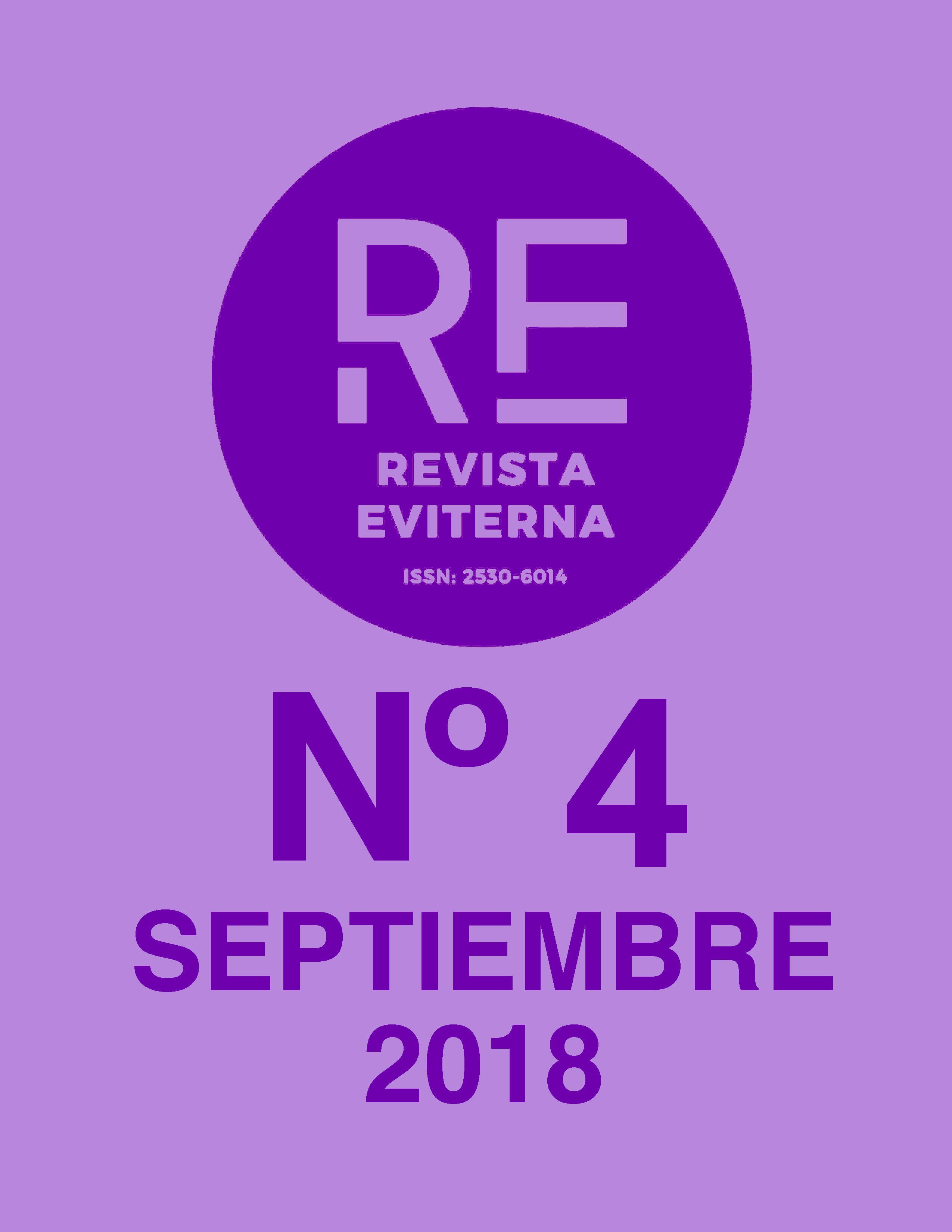Beyond Europe: Expressionism in the work of Oswaldo Guayasamín, a comparative analysis
DOI:
https://doi.org/10.24310/Eviternare.v0i4.8184Keywords:
German Expressionism; Latin American Expressionism; Oswaldo Guayasamín; K¨the Kollwitz; George Grosz; Otto DixAbstract
Expressionism is a universal movement that can be placed in different contexts throughout art history, but it can’t be merely reduced to an Avant-garde movement. This paper seeks to show how this reality can flourish in any age and in any place, in which can be found similar features. To achieve this goal, I will perform a comparative analysis of the German Expressionism and the Latin American Modern Art: similarities between them, the aesthetics and the purpose of art itself. The main focuses of this work are Käthe Kollwitz, George Grosz and Otto Dix, German artists, and, as the paradigm of this movement in the Latin American ambit, the Ecuadorian artist Oswaldo Guayasamín.
Downloads
Metrics
Publication Facts
Reviewer profiles N/A
Author statements
Indexed in
-
—
- Academic society
- N/A
- Publisher
- Universidad de Málaga
References
ADOUM, Jorge Enrique (1998). Guayasamín: el hombre, la obra, la crítica. Editorial Das Andere: Núremberg.
ARACIL, Alfredo y RODRÍGUEZ, Delfín (1982). El siglo XX. Entre la muerte del Arte y el Arte Moderno. Istmo: Madrid.
AREÁN, Carlos (1993). La pintura expresionista en España. Ibérico Europea de Ediciones: Madrid.
BAHR, Hermann (1998). Expresionismo.Editorial Colección de Arquitectura: Murcia.
BASSIE, Ashley (2006). Expresionismo. Numen: México.
BAYÓN, Damián (2006). América latina en sus artes. Siglo Veintiuno Editores: México.
CHILVERS, Ian (2001). Diccionario de Arte. Editorial Complutense: Madrid.
DONDIS, Donis A. (1976).La sintaxis de la imagen: Introducción al Alfabeto Visual. Editorial Gustavo Gil: Barcelona.
FARRELL, Jennifer (2017). World War I and the visual arts. The Metropolitan Museum of Art Bulletin: Nueva York.
FRICK, María (2014), “El expresionismo en la pintura latinoamericana: transferencias y trascendencia”, Atrio, nº 20, pp. 128-139.
JUAN, Adelaida de (2006), “Actitudes y reacciones”, en BAYÓN, Damián. América latina en sus artes.Siglo Veintiuno Editores: México.
MAJLUF, Natalia (1997). “Nacionalismo e indigenismo en el arte mexicano”, en GUTIÉRREZ VIÑUALES, Rodrigo y GUTIÉRREZ, Ramón. Pintura, escultura y fotografía en Iberoamérica, siglos XIX y XX.Cátedra: Madrid.
LÓPEZ FERNÁNDEZ CAO, Marián (1997). Käthe Kollwitz. 1867-1945.Ediciones del Orto: Madrid.
MADRIÑÁN, Eduardo (dir.) (1988). Guayasamín.El tiempo que me ha tocado vivir. Instituto de Cooperación Iberoamericana: Madrid.
MICHELI, Mario de (2002). Las vanguardias artísticas del siglo XX. Alianza Forma: Madrid.
RATJHE, Gerd y STOCKHAUS Heike (2013). Beyond the borders of existence. Ernst Barlach / Käthe Kollwitz. Museet for Religiøs Kunst: Lemvig.
OÑA, Lenín (1996). “Ecuador”, en SULLIVAN Edward (ed.). Arte Latinoamericano del siglo XX. Nerea: Madrid.
ROMERA, Antonio R. (1974). “Despertar de una conciencia artística (1920-1930)”, en BAYÓN, Damián, América latina en sus artes.Siglo Veintiuno Editores: México.
TRABA, Marta (1994). Arte de América latina. 1900-1980. Banco Interamericano de Desarrollo: Washington.
TORRE REYES, Carlos de la (1972). Guayasamín: Museo Español de Arte Contemporáneo, Madrid, noviembre, 1972.Comisaría de Exposiciones de la Dirección General de Bellas Artes: Madrid.
Downloads
Published
How to Cite
Issue
Section
License
All the contents published in Revista Eviterna are subject to the Creative Commons Reconocimento-NoComercia-Compartirigual 4.0 license, the full text of which can be found at <http://creativecommons.org/licenses/by-nc-sa/4.0>
They may be copied, used, disseminated, transmitted and publicly exposed, provided that:
The authorship and original source of your publication (Journal, editorial and URL of the work) are cited.
They are not used for commercial purposes.
The existence and specifications of this use license are mentioned.

Copyright is of two kinds: moral rights and patrimonial rights. Moral rights are perpetual, inalienable, inalienable, inalienable, inalienable and imprescriptible prerogatives.
In accordance with copyright legislation, Revista Eviterna recognizes and respects the moral rights of the authors, as well as the ownership of the economic right, which will be transferred to the University of Malaga for dissemination in open access.
The economic rights refer to the benefits obtained by the use or disclosure of the works. Revista Eviterna is published in open access and is exclusively authorized to carry out or authorize by any means the use, distribution, disclosure, reproduction, adaptation, translation or transformation of the work.
It is the responsibility of the authors to obtain the necessary permissions of the images that are subject to copyright.







12.png)



